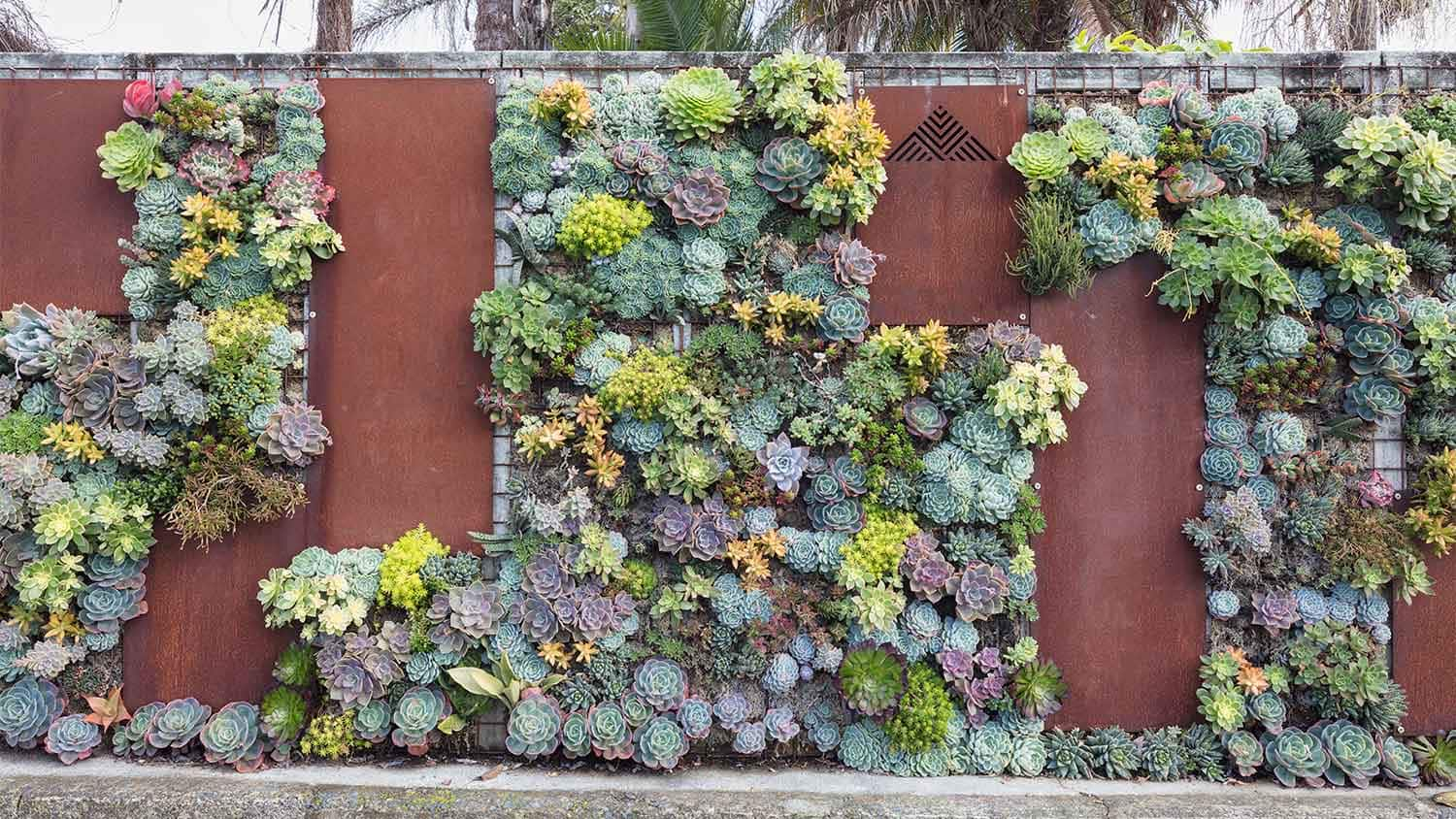Are you looking to spruce up your backyard? How about creating a succulent garden with a fence? It’s a unique and beautiful way to add some greenery and charm to your outdoor space. In this article, we’ll discuss how you can create your very own succulent garden using a fence. We’ll cover everything from choosing the right fence to selecting the perfect succulents. And if you’re unsure about any step along the way, don’t worry! We’ll provide you with all the information you need to make your succulent garden a success. So, let’s dive in and learn how to create a stunning succulent garden with a fence!
First things first, let’s talk about choosing the right fence for your succulent garden. Depending on your personal style and the aesthetic you’re going for, you have a variety of options to choose from. Whether it’s a wooden fence, a metal fence, or even a living fence made of plants, each type has its own unique benefits and considerations. We’ll discuss the pros and cons of each option, so you can make an informed decision. Once you’ve chosen your fence, we’ll move on to selecting the perfect succulents. There are countless types of succulents available, each with their own color, shape, and size. We’ll provide you with a list of popular succulents that are not only beautiful but also easy to care for. By the end of this article, you’ll be well-equipped to create a stunning succulent garden with a fence that will be the envy of all your neighbors! So, let’s get started and transform your backyard into a lush and vibrant oasis.
Creating a Succulent Garden with a Fence
Creating a garden that incorporates succulent plants can add beauty, privacy, and security to your outdoor space. By combining the natural appeal of succulents with the functionality of a fence, you can create a unique and low-maintenance oasis. In this article, we will explore the benefits of a succulent garden with a fence, how to choose the right fence, selecting suitable succulent plants, preparing the soil, planting techniques, design ideas, maintenance tips, watering and fertilizing routines, common challenges, harvesting and propagation tips, adding decorative elements, DIY projects, safety considerations, and more.
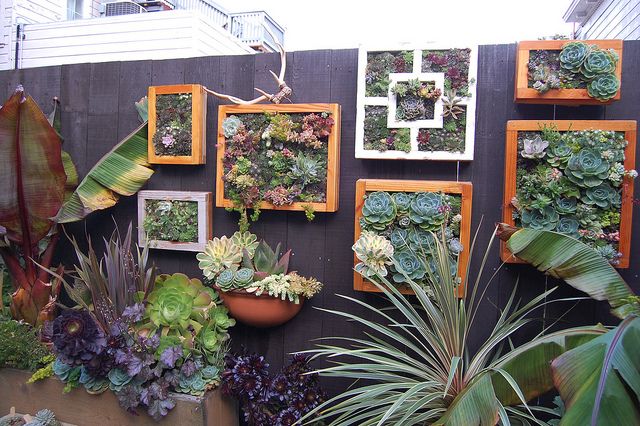
Benefits of a Succulent Garden with a Fence
Enhances the Beauty of Your Fence
One of the primary benefits of incorporating succulents into your garden with a fence is the enhancement of its overall beauty. Succulents come in a wide array of colors, shapes, and textures, making them a versatile choice for adding visual interest to your fence line. From vibrant blooms to unique foliage, succulents can transform an ordinary fence into a living work of art.
Provides Privacy and Security
A succulent garden can also serve as a natural privacy screen and provide an added layer of security to your outdoor space. When strategically planted along a fence, tall and bushy succulents can create a barrier that shields your property from prying eyes. Additionally, the thick leaves and spines of certain succulent species can act as a deterrent to potential intruders.
Requires Minimal Maintenance
One of the biggest advantages of a succulent garden with a fence is the minimal maintenance it requires. Succulents are known for their ability to thrive in arid conditions and store water in their leaves, making them drought-tolerant and low-maintenance plants. Once established, succulents typically require little watering and can withstand neglect better than many other types of plants. This makes them an ideal choice for busy homeowners looking to add greenery to their fence without the hassle of constant care.
Choosing the Right Fence for Your Succulent Garden
When planning a succulent garden with a fence, it’s crucial to choose the right fence that complements both your desired aesthetic and the needs of your succulent plants. Here are some factors to consider when selecting the appropriate fence:
Consider the Climatic Conditions
Before choosing a fence, you must consider the climatic conditions in your area. Succulents thrive in warm and dry climates, so if you live in an area with harsh winters or excessive rainfall, you need to ensure that your fence provides adequate protection for your plants. Choose a fence material and design that can withstand extreme weather conditions and provide a suitable microclimate for your succulents.
Evaluate Different Fence Materials
There are various fence materials available, each with its own set of advantages and disadvantages. When choosing a fence material for your succulent garden, consider factors such as durability, aesthetics, maintenance requirements, and how well it integrates with your overall garden design. Common fence materials include wood, metal, vinyl, bamboo, and composite materials. Research each option to determine which one best suits your needs and complements the natural beauty of succulents.
Ensure Proper Drainage System
Proper drainage is essential for the health and longevity of your succulent garden. When selecting or designing your fence, ensure that it allows for proper water drainage to prevent water from pooling around the base of your succulents. This will help prevent root rot and other water-related issues that can negatively impact the overall health of your plants.

Selecting Suitable Succulent Plants for Your Garden
Choosing the right succulent plants for your garden is essential to ensure their successful growth and longevity. Here are some key considerations when selecting succulent plants for your fence garden:
Opt for Drought-Tolerant Varieties
Succulents are renowned for their ability to thrive in dry and arid conditions. When selecting succulents for your garden, opt for drought-tolerant varieties that can withstand long periods of drought without suffering significant damage. Some popular drought-tolerant succulents include Aloe vera, Sedum, Echeveria, and Agave.
Consider the Lighting Requirements
Different succulent species have varying lighting requirements. Some succulents thrive in full sun, while others prefer partial shade. Take into account the amount of sunlight your fence receives throughout the day and choose succulents that are best suited to thrive under those conditions.
Choose Plants with Varied Colors and Textures
To create visual interest and add dimension to your succulent garden, choose plants with varied colors and textures. Mix and match succulent species that have different foliage colors, patterns, and textures to create an eye-catching display. This will create a visually appealing garden that captures attention and adds vibrancy to your fence.
Preparing the Soil for Your Succulent Garden
Preparing the soil is a crucial step in ensuring the success of your succulent garden. Succulents require well-draining soil to prevent waterlogging and root rot. Here’s how to prepare the soil for your succulent garden:
Test the Soil Quality
Before planting succulents, it’s essential to test the soil quality to determine its pH level and nutrient content. Succulents generally prefer a slightly acidic to neutral soil pH range of 6.0 to 7.0. Additionally, they require soil that is well-draining and rich in organic matter. Conduct a soil test to assess the suitability of your soil for succulent growth. If the soil is not ideal, you may need to amend it with organic matter to improve its texture, drainage, and fertility.
Amend the Soil with Organic Matter
To create a suitable growing environment for your succulents, amend the soil with organic matter. Adding organic matter helps improve soil structure, enhances drainage, and promotes microbial activity. Ideal organic amendments for succulent gardens include compost, well-rotted manure, and peat moss. Mix these amendments into the topsoil to a depth of around 6-8 inches to provide a nutrient-rich environment for your succulents.
Ensure Proper Soil Drainage
Proper soil drainage is critical for the health and survival of succulents. To ensure adequate drainage, you can incorporate various techniques when preparing the soil. Adding inorganic materials such as pumice, perlite, or coarse sand can help improve drainage by preventing the soil from compacting. Additionally, creating raised beds or mounds can also aid in ensuring proper soil drainage.
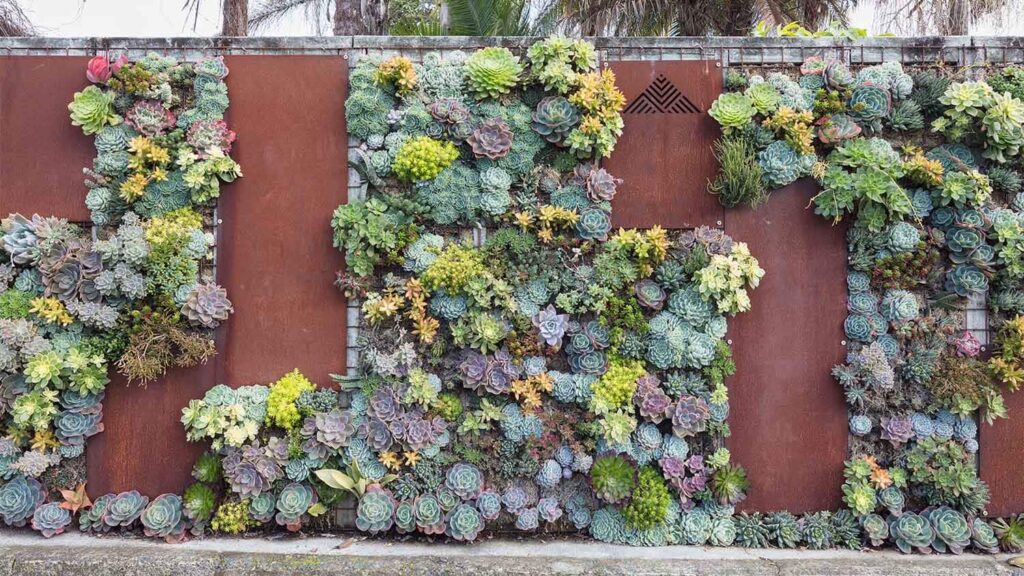
Planting Techniques for Succulents in a Fenced Garden
Proper planting techniques are essential to promote healthy growth and establishment of succulent plants in a fenced garden. Follow these guidelines to ensure successful planting:
Digging Proper Planting Holes
When planting succulents in a fenced garden, it’s important to dig proper planting holes. The depth and width of the planting hole should be slightly larger than the succulent’s root ball to allow for proper root development. Gently loosen the soil around the hole to ensure good drainage and root penetration.
Arranging and Spacing the Plants
Consider the mature size of the succulent plants and arrange them accordingly along your fence. Place taller succulents towards the back of the garden to create a visually appealing backdrop, while shorter succulents can be planted towards the front. Leave sufficient space between plants to allow for airflow and prevent overcrowding.
Watering and Mulching
After planting your succulents, water them thoroughly to help settle the soil and encourage root establishment. Be careful not to overwater, as succulents are highly sensitive to excessive moisture. Once the soil has drained, apply a layer of organic mulch around the plants to conserve moisture, suppress weed growth, and regulate soil temperature. Avoid mulching directly against the stems or leaves of succulents to prevent rotting.
Design Ideas for Succulent Gardens with a Fence
The design of your succulent garden can greatly enhance the overall aesthetic appeal of your fence. Here are some design ideas to inspire you:
Vertical Succulent Garden on Fence Panels
Create a stunning vertical succulent garden by attaching planter boxes or pockets to your fence panels. Fill these planters with a variety of succulents, positioning them at different heights to create a cascading effect. This vertical garden design is not only visually striking but also maximizes space utilization.
Succulent Wall Planters on the Fence
Add a touch of elegance to your fence by incorporating wall-mounted succulent planters. These can be attached directly to the fence, allowing you to create an eye-catching display of succulents that appear to be growing from the fence itself. This design adds depth and visual interest to your garden while utilizing minimal space.
Succulent Corner Garden with a Fence
Utilize the corners of your garden by creating a succulent corner garden with a fence. Plant a variety of succulents in raised beds or containers in the corners of your garden, framing the fence. This design creates a cozy and visually appealing corner oasis that adds depth and character to your outdoor space.
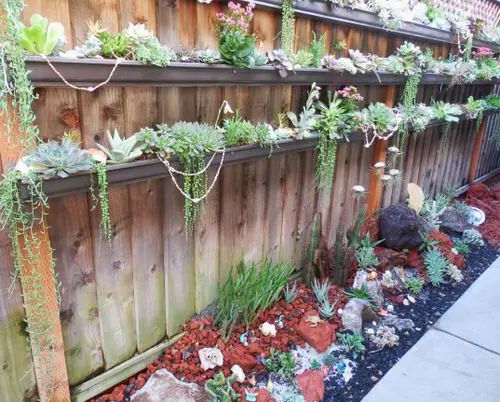
Maintaining Your Succulent Garden with a Fence
Proper maintenance is crucial for the continued health and beauty of your succulent garden. Here are some maintenance tasks to keep in mind:
Pruning and Trimming the Plants
Regular pruning and trimming are important for keeping your succulents in shape and preventing overgrowth. Remove any dead or damaged leaves, stems, or flowers to promote new growth and maintain the overall appearance of your garden.
Controlling Weeds and Pests
Weeds can compete with succulents for nutrients and water, so it’s important to keep them under control. Regularly inspect your garden for weeds and promptly remove them by hand or with appropriate weed control methods. Additionally, monitor your plants for any signs of pests such as aphids, mealybugs, or snails. If an infestation occurs, take appropriate measures to control the pests and prevent them from damaging your succulents.
Protecting Succulents from Extreme Weather
Succulents are generally resilient to many weather conditions, but extreme temperatures can still affect their health. During heatwaves, provide shade or protect your succulents with shade cloth or sunscreens. In winter, protect your succulents from frost by covering them with frost blankets or moving potted succulents indoors. By taking these precautions, you can ensure the longevity of your succulents and protect them from extreme weather conditions.
Watering and Fertilizing Routine for Succulent Gardens
Proper watering and fertilizing routines are vital for the successful growth and maintenance of your succulent garden. Follow these guidelines to keep your succulents healthy:
Watering Guidelines for Different Succulent Varieties
Succulents have unique water needs depending on their species and environmental conditions. As a general rule, allow the soil to dry out completely between waterings. When watering, give your succulents a thorough soak, ensuring that the water reaches the roots. Avoid overwatering, as this can lead to root rot and eventual plant death. Adjust your watering frequency based on the climate and specific requirements of your succulent plants.
Applying Fertilizer in the Right Proportions
Succulents typically have lower nutrient requirements compared to other plants. Fertilize your succulent garden sparingly and use a well-balanced fertilizer specifically formulated for succulents. Apply the fertilizer according to the manufacturer’s instructions, taking care not to exceed the recommended dosage. Overfertilization can lead to nutrient burn and damage the delicate roots of succulents.
Avoiding Overwatering and Nutrient Burn
Overwatering and nutrient burn are common problems in succulent gardens that can be easily avoided. Be cautious not to water your succulents too frequently or excessively, as this can cause root rot and fungal diseases. Similarly, apply fertilizers sparingly to prevent nutrient burn, which manifests as brown or yellow leaf tips. Regularly monitor your succulent plants for signs of moisture stress or nutrient deficiencies and adjust your watering and fertilizing routines accordingly.
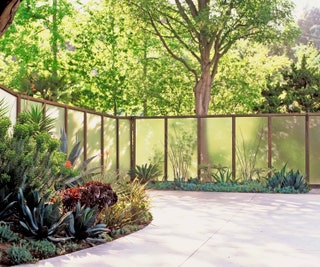
Common Challenges in Succulent Gardens with a Fence
While succulents are generally low-maintenance plants, they can still face certain challenges. Here are some common challenges you may encounter in your succulent garden:
Dealing with Root Rot and Overwatering
One of the most common challenges in succulent gardens is root rot due to overwatering. Overwatering succulents can lead to significant damage or even death of the plants. To prevent root rot, always ensure that your succulents are planted in well-draining soil, and avoid excessive watering. Allow the soil to dry out completely between waterings to prevent waterlogged conditions that can encourage fungal growth.
Managing Pest Infestations
Succulents are generally resistant to pests, but they can still fall prey to some common garden pests. Aphids, mealybugs, scale insects, and snails are some of the typical culprits that can infest succulents. Monitor your plants regularly and take appropriate measures to control any pest infestations, such as using insecticidal soaps or natural predators. Prompt action can help prevent the pests from spreading and causing significant damage to your succulent garden.
Preventing Sunburn and Heat Stress
While succulents are known for their sun-loving nature, excessive sun exposure can lead to sunburn and heat stress. Sunburn appears as discolored or blackened patches on the leaves, usually occurring when succulents are suddenly exposed to intense sunlight. To prevent sunburn, gradually acclimate your succulents to the sun by exposing them to increasing levels of light over time. Provide partial shade during the hottest parts of the day, especially during heatwaves, to protect your succulents from excessive heat stress.
Harvesting and Propagation Tips for Succulent Gardens
Succulents offer the unique ability to propagate and reproduce in various ways. Here are some harvesting and propagation tips for your succulent garden:
Harvesting Succulent Leaves for Propagation
Propagating succulents can be done by harvesting leaves and allowing them to produce new plants. To harvest leaves, gently remove mature leaves from the base of the plant or select healthy leaves that have fallen naturally. Ensure that the leaves are fully intact and undamaged. Allow the harvested leaves to dry and callus for a few days before placing them on well-draining soil to encourage root and plant development.
Cloning Succulent Plants through Stem Cuttings
Many succulents can also be easily cloned through stem cuttings. To propagate through stem cuttings, use a clean, sharp knife to cut a section of the stem, ensuring it includes at least one node. Allow the cutting to dry and callus for a few days before planting it in well-draining soil or a suitable propagation medium. Place the cutting in a warm and bright location, away from direct sunlight, and mist it periodically to maintain humidity.
Dividing and Repotting Mature Succulents
As succulents mature and grow, they may require division and repotting to maintain their overall health and appearance. Dividing succulents involves carefully separating offsets or clumps of plants from the main plant to create new individual plants. Repotting involves transferring mature succulents into larger containers or pots to provide them with more space for growth. When dividing or repotting succulents, ensure that the soil and pots used are well-draining to prevent waterlogging and other related issues.
Adding Decorative Elements to Your Succulent Garden
Enhance the visual appeal of your succulent garden by incorporating decorative elements. Here are some ideas to consider:
Using Colorful Garden Accents
Add pops of color to your succulent garden by incorporating colorful garden accents. Choose decorative pots, planters, or garden accessories that complement the colors of your succulents and add visual interest to your fence garden. Consider using vibrant mosaic tiles, colorful pebbles, or painted stones to create unique focal points within your garden.
Incorporating Rocks and Pebbles
Rocks and pebbles can be used to create attractive pathways, decorative borders, or natural accents within your succulent garden. These elements not only add texture but also help with soil moisture retention and prevent erosion. Choose rocks and pebbles in various sizes, shapes, and colors to create a visually pleasing landscape.
Including Garden Art and Sculptures
To add a touch of personality and charm to your succulent garden, consider incorporating garden art and sculptures. Opt for sculptures made from materials that withstand outdoor conditions, such as metal, ceramic, or stone. Place them strategically amongst your succulent plants to create a captivating and artistic focal point.
Creative DIY Projects for Succulent Gardens with a Fence
Engage in creative DIY projects to personalize your succulent garden and add a unique touch. Here are some ideas to inspire your DIY endeavors:
Building a Vertical Succulent Planter
Construct a vertical succulent planter to maximize space utilization and create a stunning focal point on your fence. Use weather-resistant materials such as cedar planks or pallets to build a sturdy frame. Attach planters or pockets to the frame and fill them with a variety of succulents to create a cascading garden that grows vertically along your fence.
Creating a Succulent Wreath
Transform a traditional wreath frame into a living work of art by creating a succulent wreath. Attach sphagnum moss or a similar, moisture-retaining material to the frame, and insert small succulent cuttings into the moss. Secure the cuttings with florist wire or fishing line, and mist the wreath periodically to maintain humidity. Hang it on your fence or use it as a decorative centerpiece in your garden.
Designing a Hanging Succulent Garden
Build a hanging succulent garden by repurposing an old ladder or wooden planks. Attach small pots or planters filled with succulents to the ladder or planks, allowing them to drape or cascade downwards. This creative DIY project adds vertical visual interest and maximizes space utilization while showcasing your favorite succulent varieties.
Safety Considerations for Succulent Gardens with a Fence
While creating your succulent garden with a fence, it’s important to prioritize safety for both yourself and others. Here are some safety considerations to keep in mind:
Choosing Non-Toxic Succulent Varieties
If you have children or pets, it’s vital to choose non-toxic succulent varieties for your garden. Some succulent species can be toxic if ingested, causing discomfort or more severe health issues. Research the toxicity of succulent species before incorporating them into your garden to ensure the safety of your loved ones.
Keeping Succulents out of Children and Pets’ Reach
To prevent accidental ingestion or injury, it’s important to keep your succulents out of the reach of children and pets. Consider planting succulents in raised beds or containers that are placed on elevated surfaces or using hanging planters that are inaccessible to children and pets. Regularly monitor your garden for fallen leaves or plant parts and promptly remove them to minimize the risk of accidental ingestion.
Handling Sharp Tools and Thorns
When working in your succulent garden, it’s crucial to exercise caution and use appropriate protective gear. Many succulent species have sharp thorns or spines that can cause injury if mishandled. Wear sturdy gloves and use garden tools with care to avoid cuts, punctures, or skin irritation. Always store sharp tools properly and keep them out of reach of children to prevent accidents.
Conclusion
Creating a succulent garden with a fence offers numerous benefits, from enhancing the beauty of your fence to providing privacy and security. By carefully selecting fence materials, suitable succulent plants, and preparing the soil adequately, you can create a thriving and visually appealing garden. Regular maintenance, proper watering and fertilizing routines, and addressing common challenges will ensure the long-term success of your succulent garden. Get creative with design ideas and DIY projects, and incorporate safety considerations to enjoy your beautiful succulent garden with peace of mind. Explore the multitude of possibilities and create a succulent garden with a fence that reflects your personality and adds a touch of natural beauty to your outdoor space.
